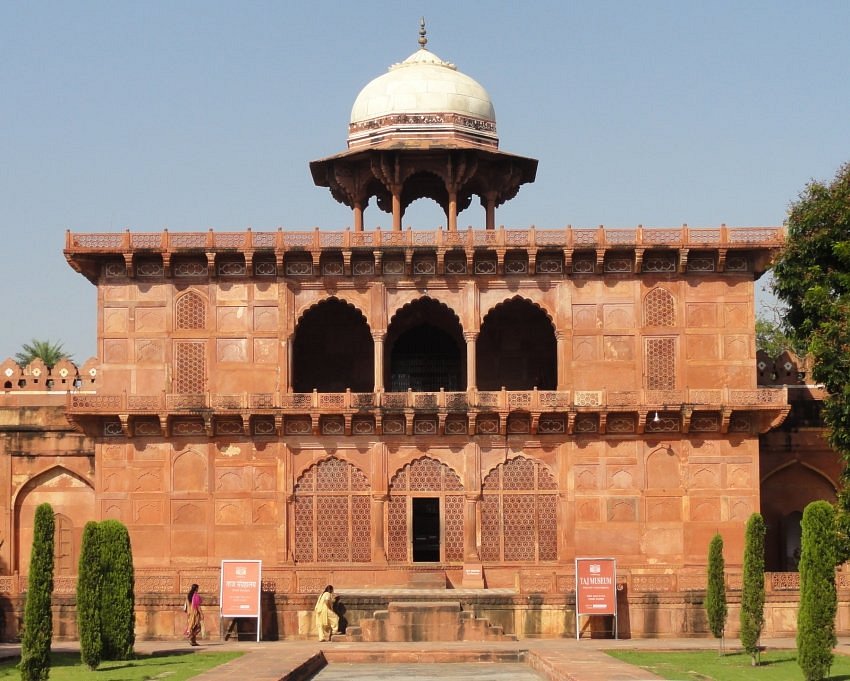Introduction: Taj Museum is a fascinating museum located within the Taj Mahal complex in Agra, India. It is dedicated to showcasing the history, architecture, and legacy of the iconic Taj Mahal. The museum offers visitors a deeper understanding of the Taj Mahal’s construction, the artistic techniques used, and the historical context in which it was built. It is a must-visit destination for anyone interested in the rich heritage and cultural significance of this world-renowned monument.
Exhibits and Collections:
Taj Museum houses a wide range of exhibits and collections that provide insight into the Taj Mahal’s creation, its cultural significance, and its enduring legacy. The museum displays various artifacts, models, and photographs that offer a glimpse into the architectural techniques, the materials used, and the intricate craftsmanship involved in building the Taj Mahal.
The exhibits highlight the historical background of the Taj Mahal, including the love story between Emperor Shah Jahan and his wife Mumtaz Mahal, which inspired its construction. Visitors can learn about the Mughal architecture and design elements incorporated into the monument, as well as the significance of the Taj Mahal as a symbol of love and devotion.click here

Visiting the Museum:
To visit the Taj Museum, visitors can access it within the Taj Mahal complex. It is located near the entry gate, and tickets can be purchased at the entrance. The museum provides an enriching experience for tourists, complementing their visit to the Taj Mahal itself. It is advisable to allocate sufficient time to explore the exhibits and learn about the history and craftsmanship behind this architectural wonder.
Highlights and Interpretive Displays:
One of the highlights of the museum is a replica of the Taj Mahal, showcasing its intricate architectural details. The replica allows visitors to appreciate the fine craftsmanship and artistic mastery involved in the monument’s construction. Additionally, there are exhibits featuring archival photographs, historical documents, and multimedia presentations that enhance the visitor’s understanding of the Taj Mahal’s significance.
Educational Value and Cultural Importance:
Taj Museum serves as an educational resource, offering visitors the opportunity to delve deeper into the history, culture, and architectural heritage of the Taj Mahal. It provides valuable insights into the artistic techniques, materials, and craftsmanship employed during the construction of the monument. The museum also serves as a platform for promoting cultural understanding and appreciation of India’s rich heritage.
Preservation and Conservation:
The museum plays a vital role in the preservation and conservation of the Taj Mahal’s legacy. It contributes to raising awareness about the monument’s historical significance and the importance of its protection. The museum also plays a role in supporting ongoing conservation efforts by generating funds for the maintenance and restoration of the Taj Mahal.
Conclusion || Taj Museum
Taj Museum offers a captivating journey into the history, architecture, and cultural significance of the Taj Mahal. With its diverse exhibits, informative displays, and immersive experience, it enriches the visitor’s understanding of this architectural masterpiece. A visit to the museum provides a comprehensive perspective on the Taj Mahal, enhancing the overall appreciation of this UNESCO World Heritage Site. It is a must-visit destination for anyone seeking to delve deeper into the story and craftsmanship behind the Taj Mahal.
Book Your Flights : Here 30% OFF on Booking
Book Your Hotels : Here 20% OFF on Booking

0 Comment